I've been the Fuji X-T20 owner for four years while writing this review. It's the main and only Astro-imaging camera I have been using for my astrophotography with a small telescope since the beginning of 2017. It gives me out-of-this-world (literally) pictures of our universe, yet it has some quirks. Is the Fujifilm X-T20 camera worth your money if you want it for astrophotography? Let's find out in my honest Fuji X-T20 astrophotography review!
Jump to:
- Fuji X-T20 Spec
- Fuji X-T20 Sample Astrophotography Pictures
- Things I like in my X-T20 for astrophotography
- Things to know and remember - not necessarily advantages or disadvantages
- Things that could be better in X-T20 (from the astrophotography standpoint)
- Astrophotography lenses for the Fuji X-T20 (and the rest of the Fuji X-series cameras)
- Fuji X-T20 must-have accessories for astrophotography
- Fuji X-T20 astrophotography settings
- My verdict
- My Amazon Picks for Fuji X-T20
- 💬 Comments
Fuji X-T20 Spec
| Manufacturer | Fujifilm |
| Release date | 23 February 2017 |
| Image sensor type | X-Trans CMOS III (color, not mono) |
| Image sensor size | 23.6 mm × 15.6 mm (APS-C) |
| Image sensor resolution | 24.3 MP |
| Lens mount type | X-mount |
| External control | 2.5mm jack for external wired remote control |
| ISO range | 200 - 12800 |
| Storage | Single SD card slot |
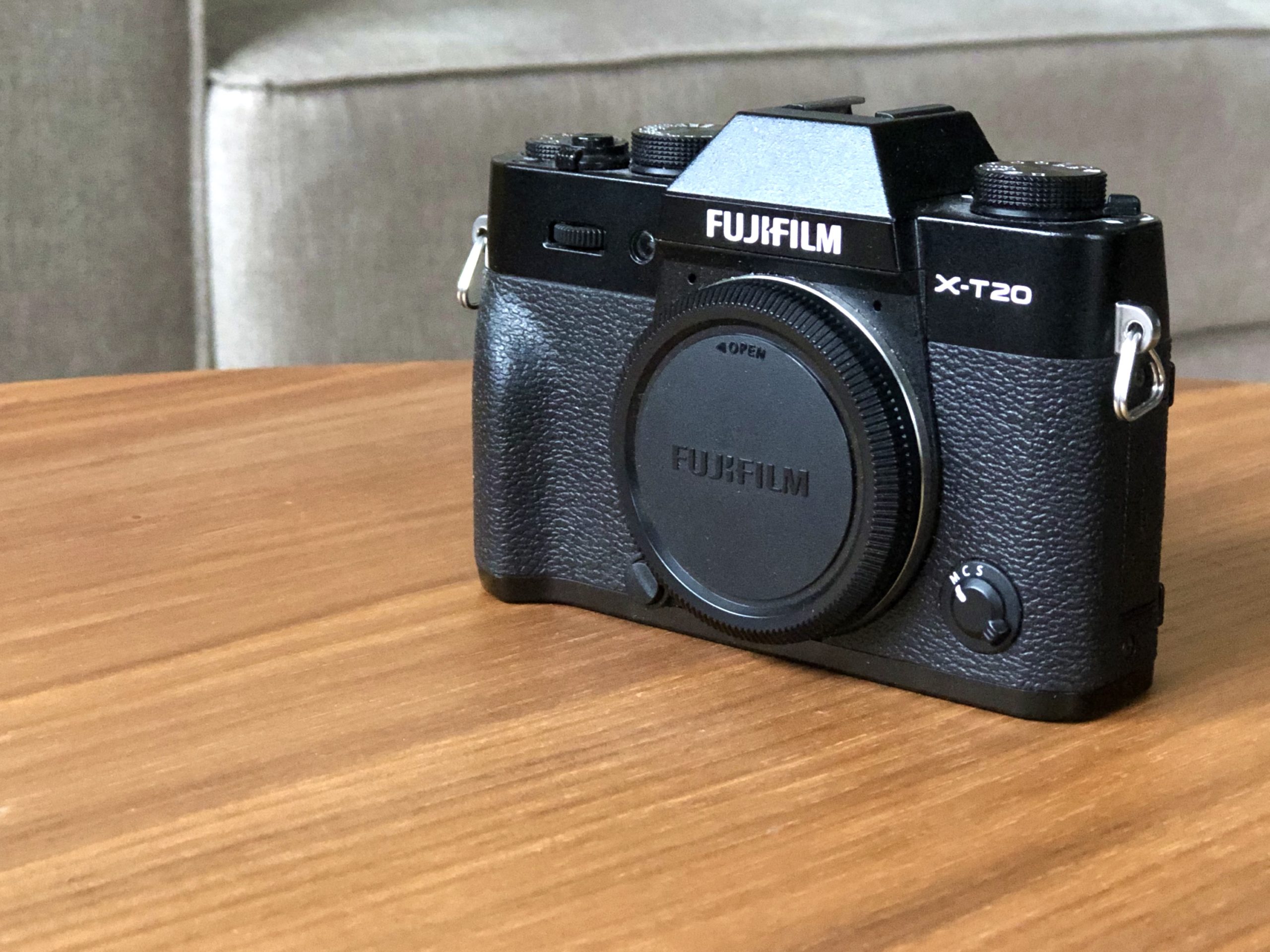
Fuji X-T20 Sample Astrophotography Pictures
So, to the point - that's the reason you came here. This is what you can expect from the X-T20 as your astrophotography camera.
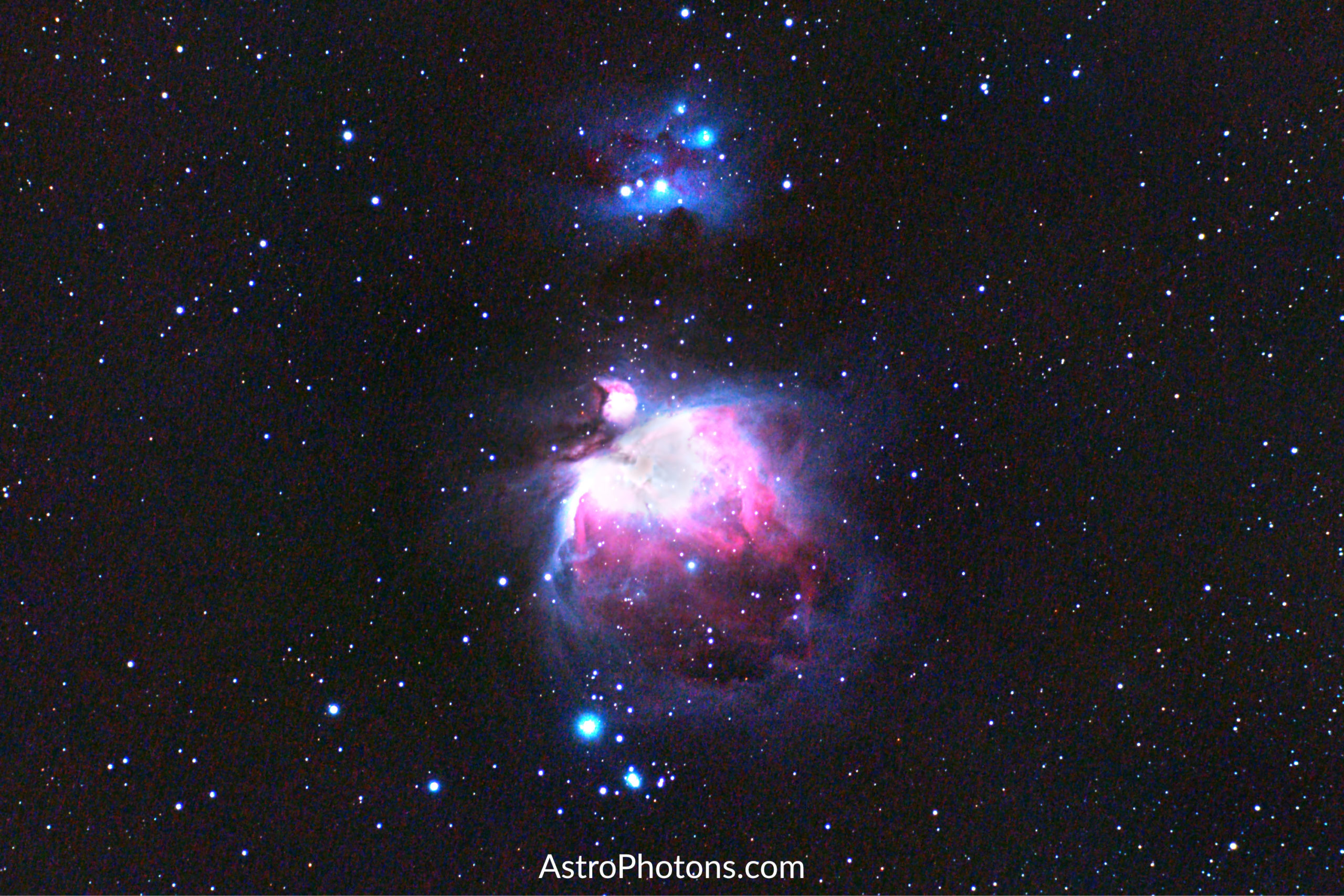
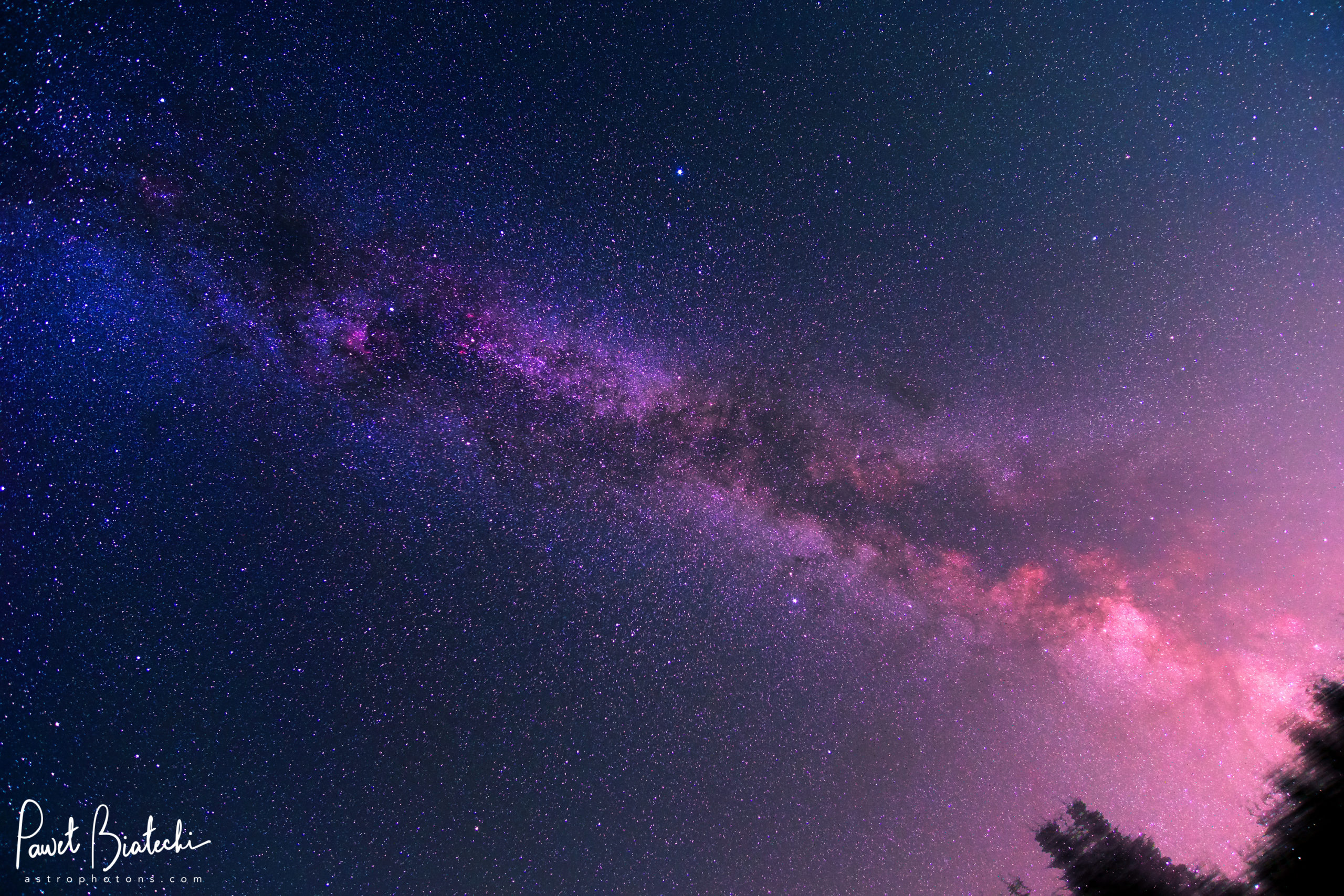
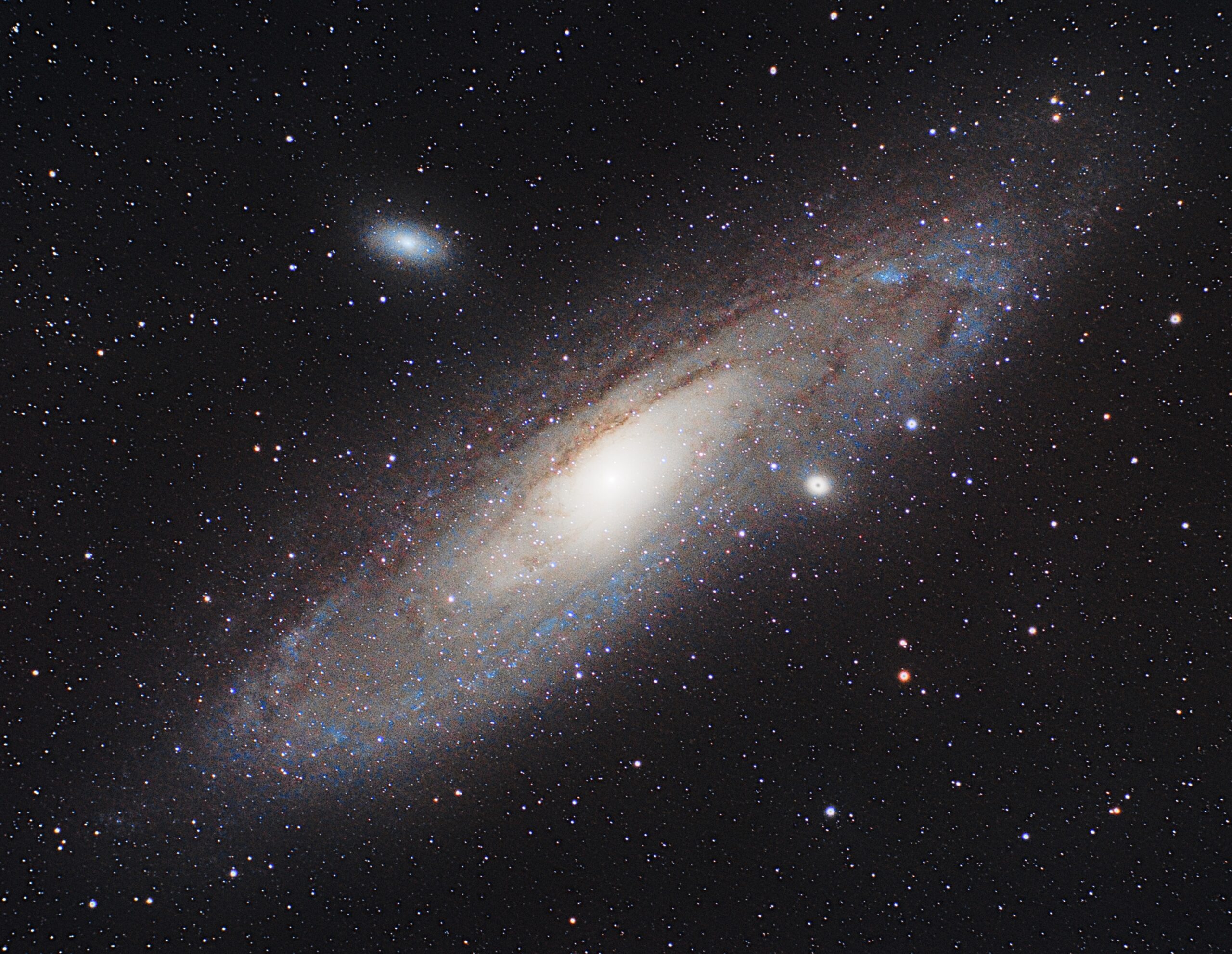
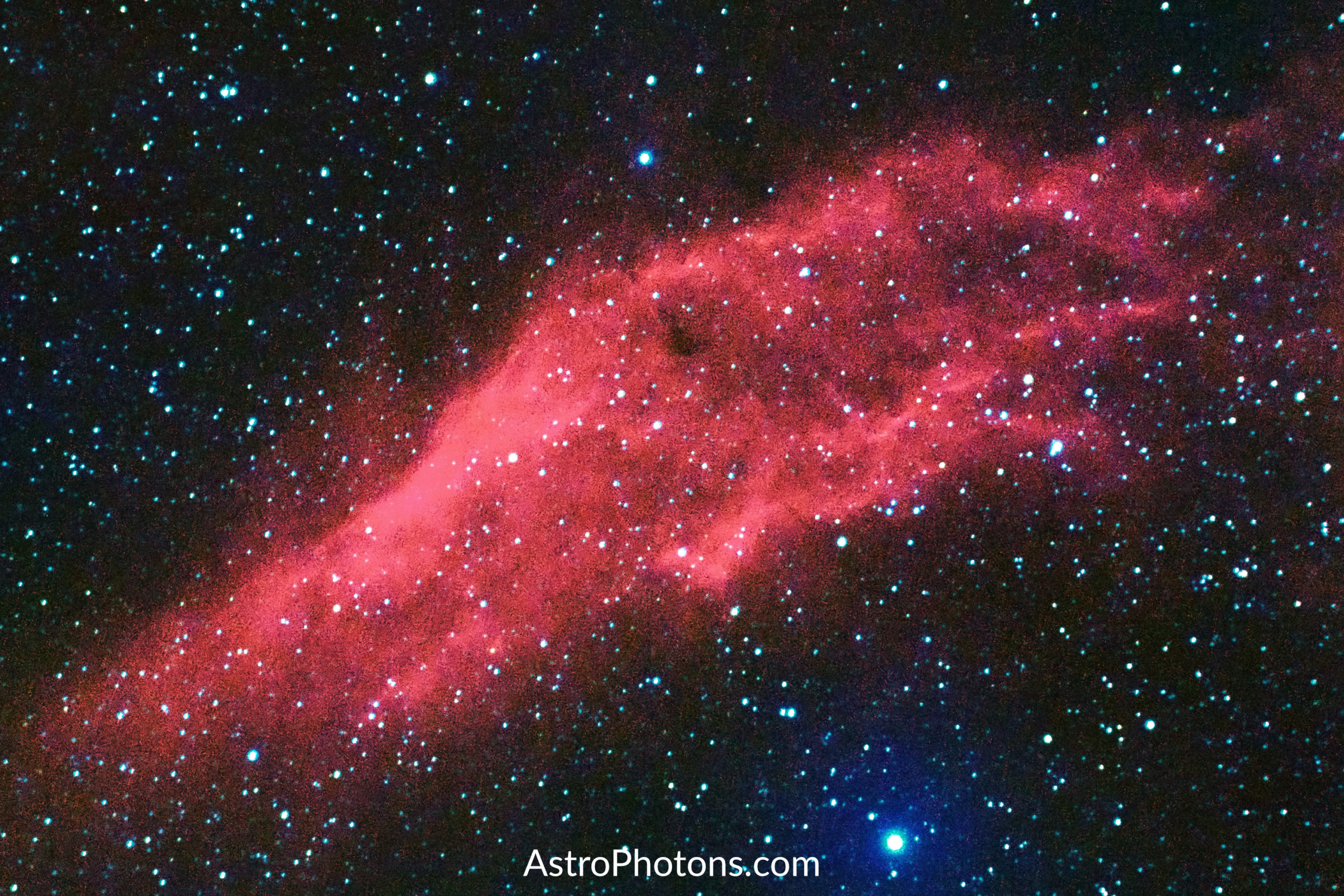
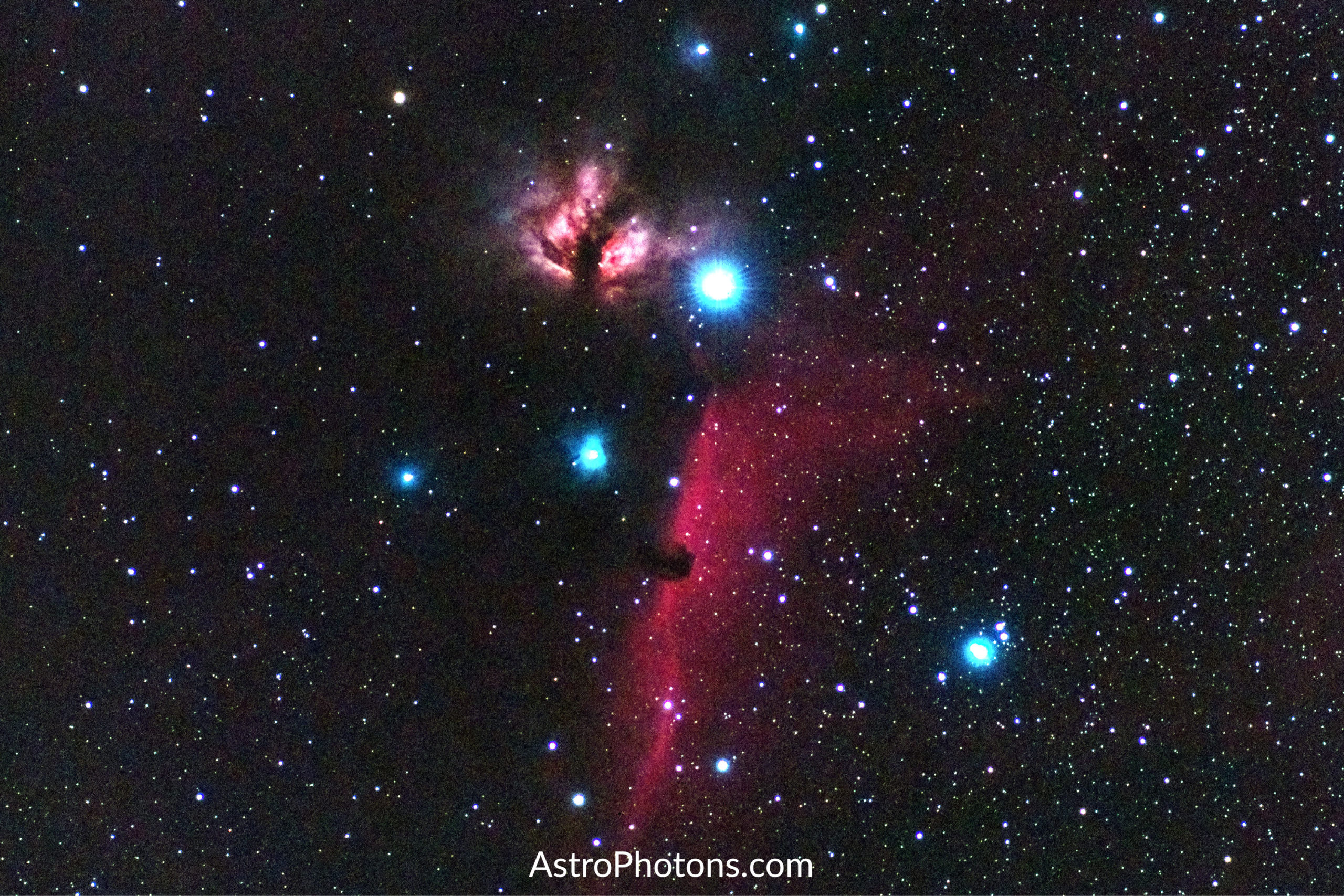
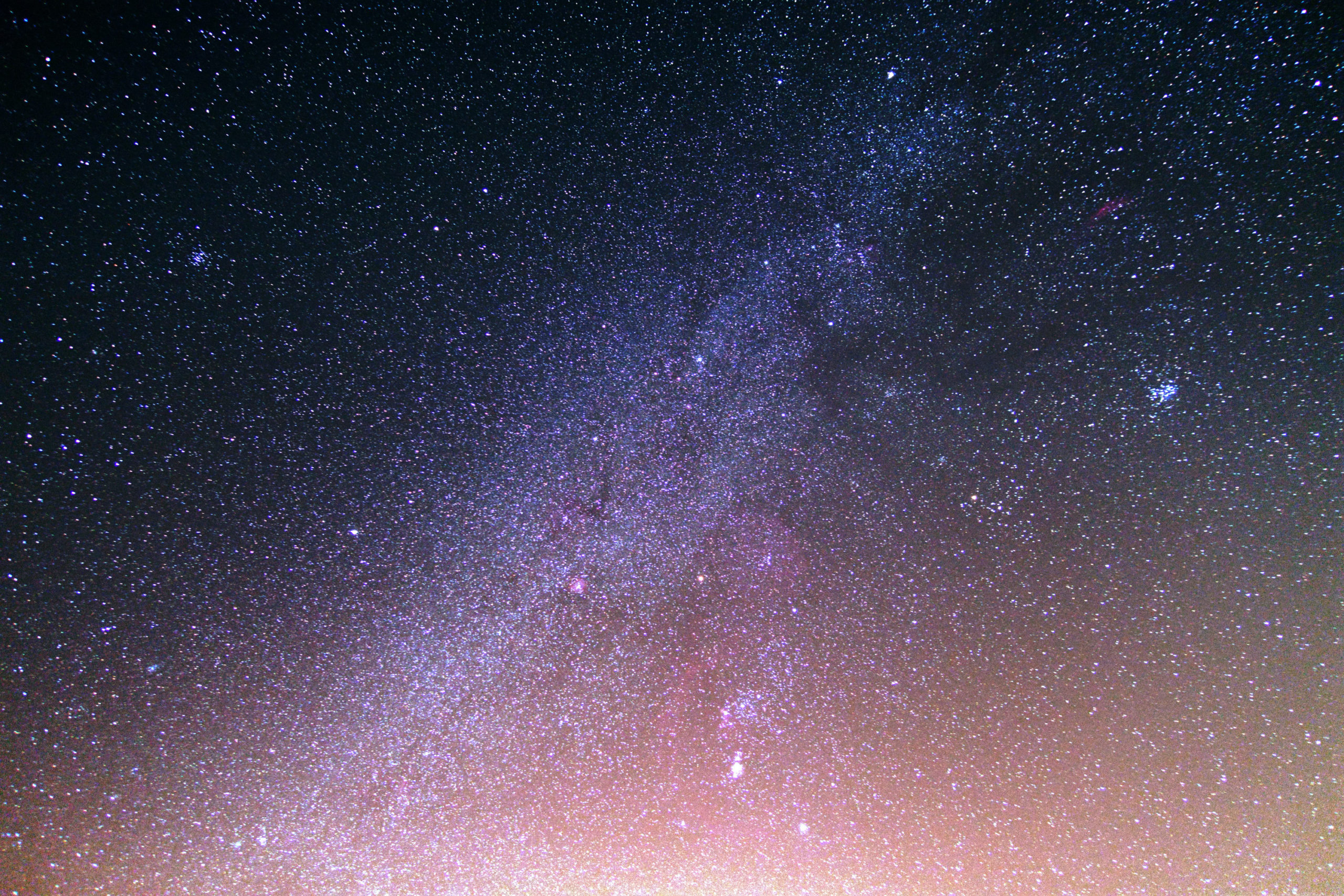
These are impressive results for a small, pocket camera; I especially like the sensor's H-alpha wavelength sensitivity (it probably has something to do with the sensors' different, non-standard, non-Bayer matrix. Sensor is not modified in any way like in some Canon cameras.) Some pictures are noisy because of the short integration times (30 minutes or less), not because of the camera's inability to do better. Bear that in mind.
To see more astrophotography pictures from my Fuji X-T20, go to the appropriate astrophotography targets pages:
Things I like in my X-T20 for astrophotography
Image quality
The X-T20 sensor produces outstanding images. See above.
Ease of operating
This camera, like the whole Fuji X-series, is just a joy to operate. Every important shooting setting like ISO, shutter speed, or shutter delay is easily changeable with physical buttons and knobs - no need to go inside the camera menu. This is also valid for dedicated Fujinon lenses, where you choose the aperture with a physical ring, not inside the camera menu like in Canons or Nikons.
Compact-ability
The X-T20 is small and lightweight. With the lens off, you can put it in your pocket and transport it this way. Compared to huge Canon and Nikon DSLRs, this mirrorless camera is fantastic for travel astrophotography. It almost needs no space in your bag. It's a massive upgrade from the big old DSLRs.
Tilted LCD screen
Doing astrophotography, you usually point your telescope or a telephoto lens straight up to the night sky. If you don't want to lie on the ground to operate your camera, you need one with a tilted screen. X-T20 - checked.
Nice H-alpha sensitivity
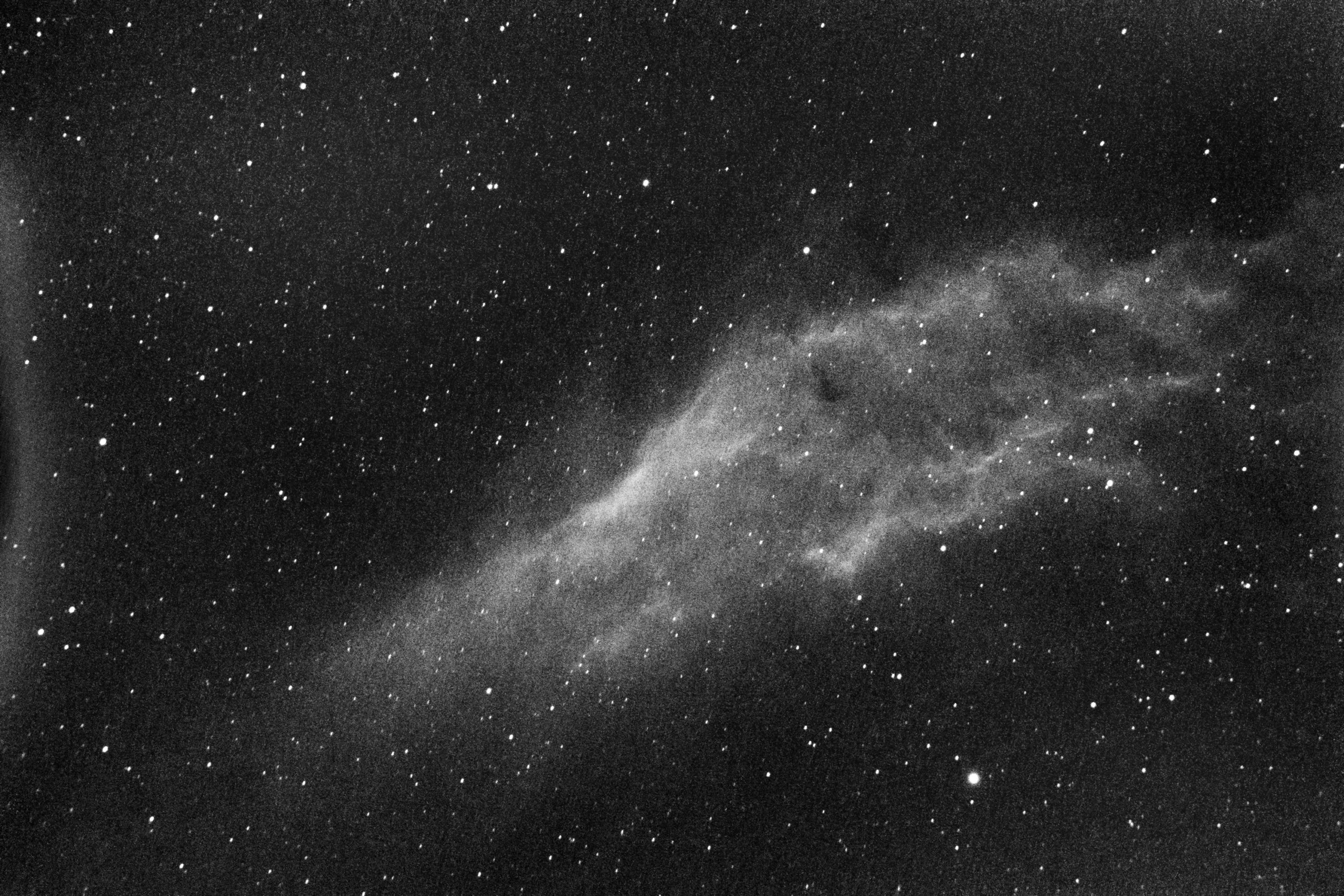
No products found.
Fuji X-T20 is not an astronomy-dedicated, cooled mono camera, yet it's possible to do some H-alpha (and probably other narrowband types, but I don't have proper filters yet) astrophotography with it. Just take multiple exposures and stack them to get rid of sensor noise.
Things to know and remember - not necessarily advantages or disadvantages
Non-Bayer matrix - possible incompatibilities with some processing software
X-trans sensor type differentiates Fujifilm from other camera producents like Canon, Nikon, Panasonic, or Olympus. Not every image-processing software supports this format, so check this out before deciding on your astrophotography tools. Programs I use and recommend for Fujifilm X-T20 RAW/RAF files are Capture One and PixInsight - both work flawlessly.
Things that could be better in X-T20 (from the astrophotography standpoint)
Wireless connectivity via apps
My standard workflow when setting the X-T20 for astrophotography looks less or more like this:
- Mount the camera on an equatorial mount
- Set proper camera settings
- Do a few test shots with a Bahtinov mask put on to focus my lens/telescope
- Do a test shot to orientate where my lens/telescope is pointing on
And this is when I usually spend a lot of time on it. For plate solving, I use the Astrometry web service. To get pictures from the camera, I have to connect to it via WiFi, open the dedicated app, download the picture from the camera, and send it to the server for plate solving. Sadly, there's no way to stay connected to the camera during shooting - every time you want to get pictures to your smartphone, you have to go to the camera menu, turn the wireless connection on, connect your phone, etc. It's inconvenient, and Fujifilm could upgrade its software to be able to do those types of things easier (or by getting an SD WiFi card - I will be testing this solution soon).
Not enough maximum zoom when checking pictures in the camera
Sometimes when I focus on a really small star, it's hard to say if my spikes from the Bahtinov mask are truly in the star's center. Again, it could be easily fixed via a software update. One hack to overcome this is to use a magnifying glass when viewing the picture on the camera.
Unable to power the camera from an external source (not from the dedicated battery)
My dream goal astrophotography setup is powered from one and only one power source (my Celestron PowerTank Lithium). Thanks to this, I don't have to remember to charge a few different batteries; I have to worry about this. Sadly, there is no option to power the X-T20 from anything other than its camera battery (even from the built-in USB port - it's only for image transfer). Because of this, I must remember to charge an additional three camera batteries when I go to the field. It's not a deal-breaker, just a moderately important inconvenience.
High noise on long exposures (longer than 3 minutes)
Exposures up to three minutes have very low noise. Above that, noise starts to appear. You can, of course, get rid of it by stacking multiple exposures and using calibration frames - flats, darks, bias, just be aware of it.
Astrophotography lenses for the Fuji X-T20 (and the rest of the Fuji X-series cameras)
Although the X-Mount is not the most popular mount system beyond lens producers, thanks to a wide offer of adapters, you can attach almost any lens and telescope to the Fuji X-T20 (and to any X-mount Fuji camera in general). Adapted lenses usually work as dumb lenses, which means no auto-focus and no EXIF data saving, but as an astrophotographer, you don't need those things.
Rokinon/Samyang 12mm f/2
This is my lens of choice for Milky Way photography.
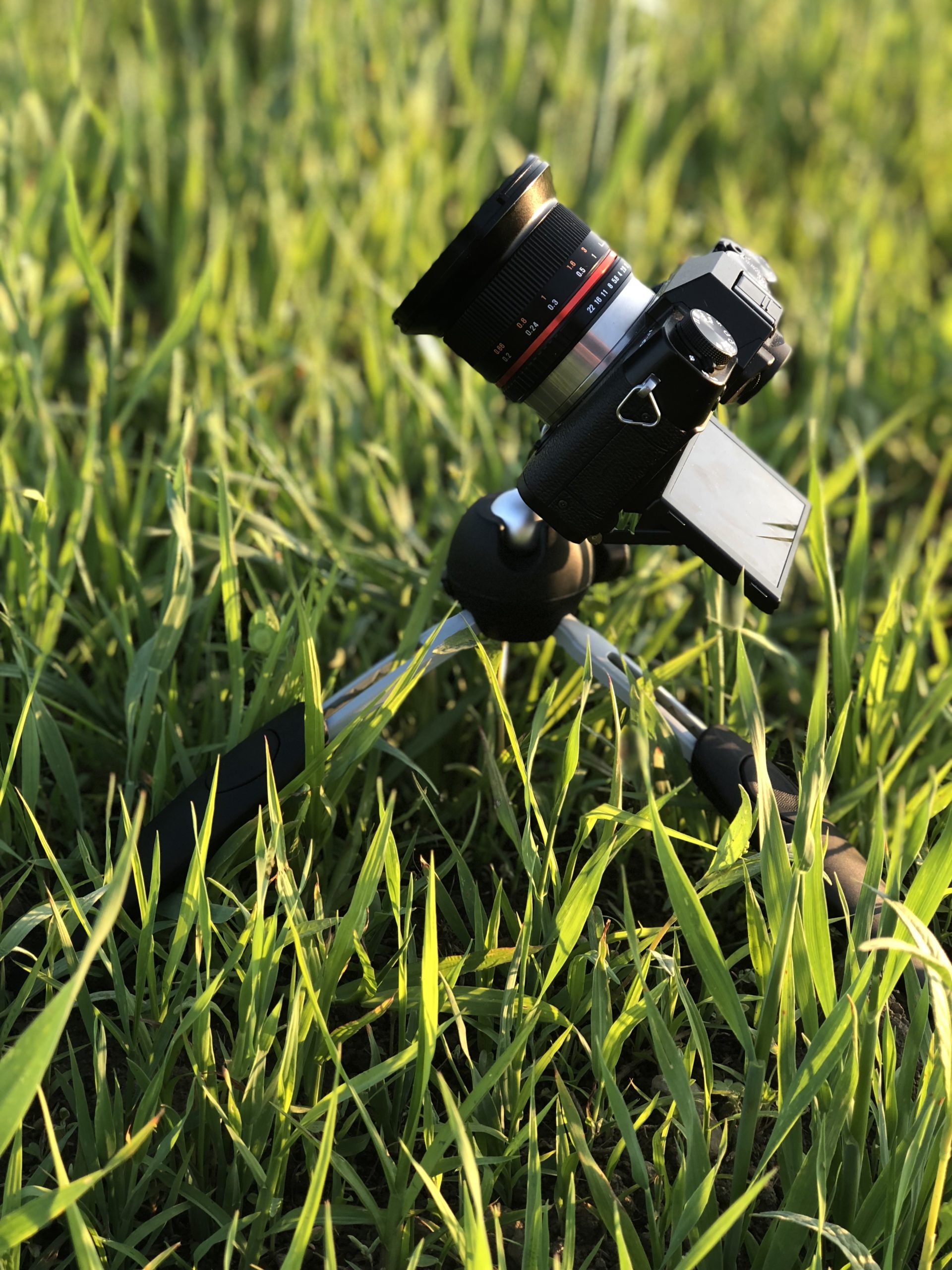
No products found.
Rokinon/Samyang 135mm f/2
A fantastic lens for ultra-wide deep-sky imaging. Perfect for large targets like the North America Nebula, Orion Nebula region, or the Rho Ophiuchi cloud complex.
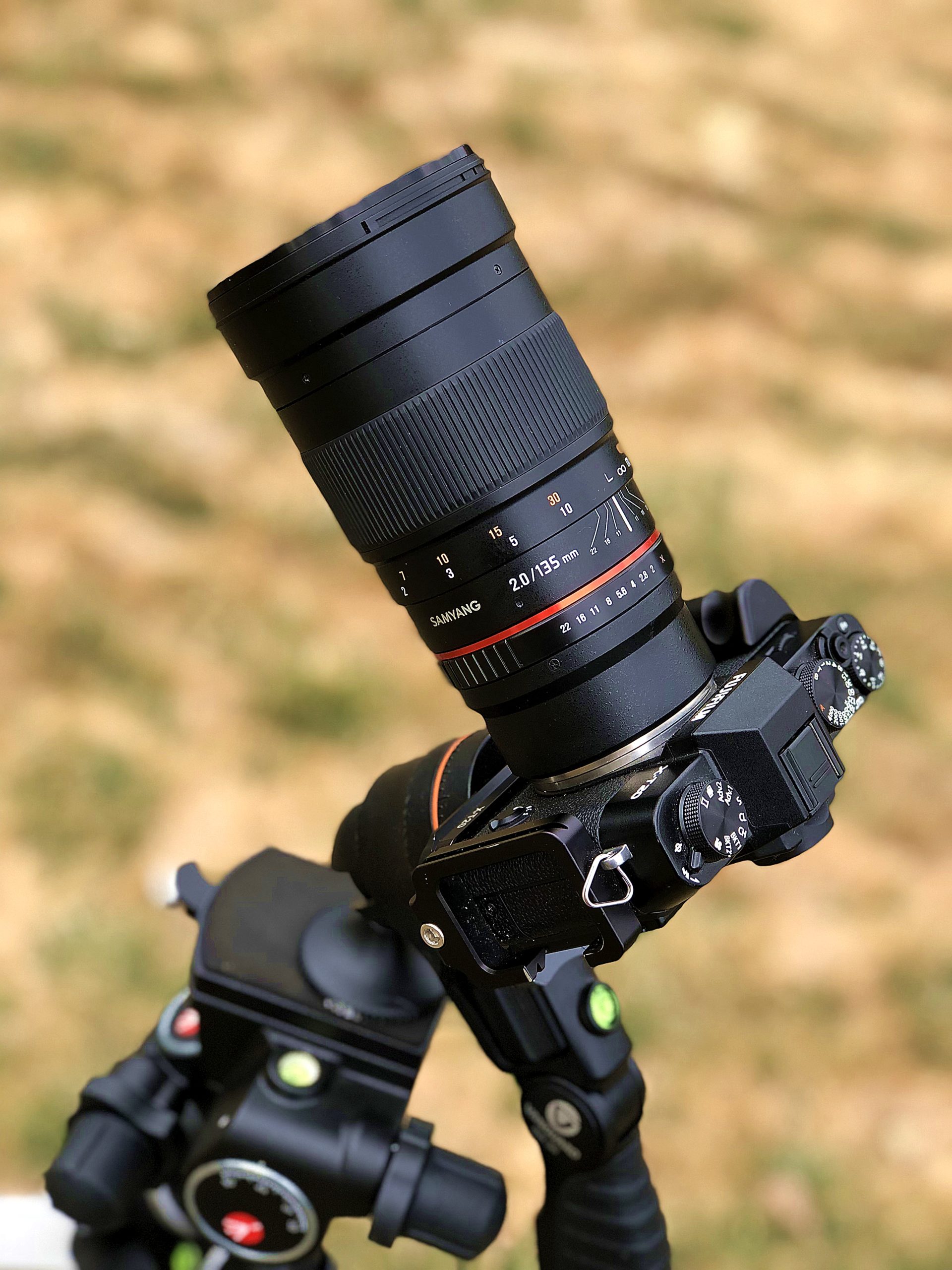
No products found.
Fuji X-T20 must-have accessories for astrophotography
Grip
X-T20 is unusable with one hand only without an additional grip. I think that Fuji engineers wanted to make this camera as small as it could be, but they sacrificed ease of use for a few grams/pounds of weight. Luckily, you can fix it very easily.
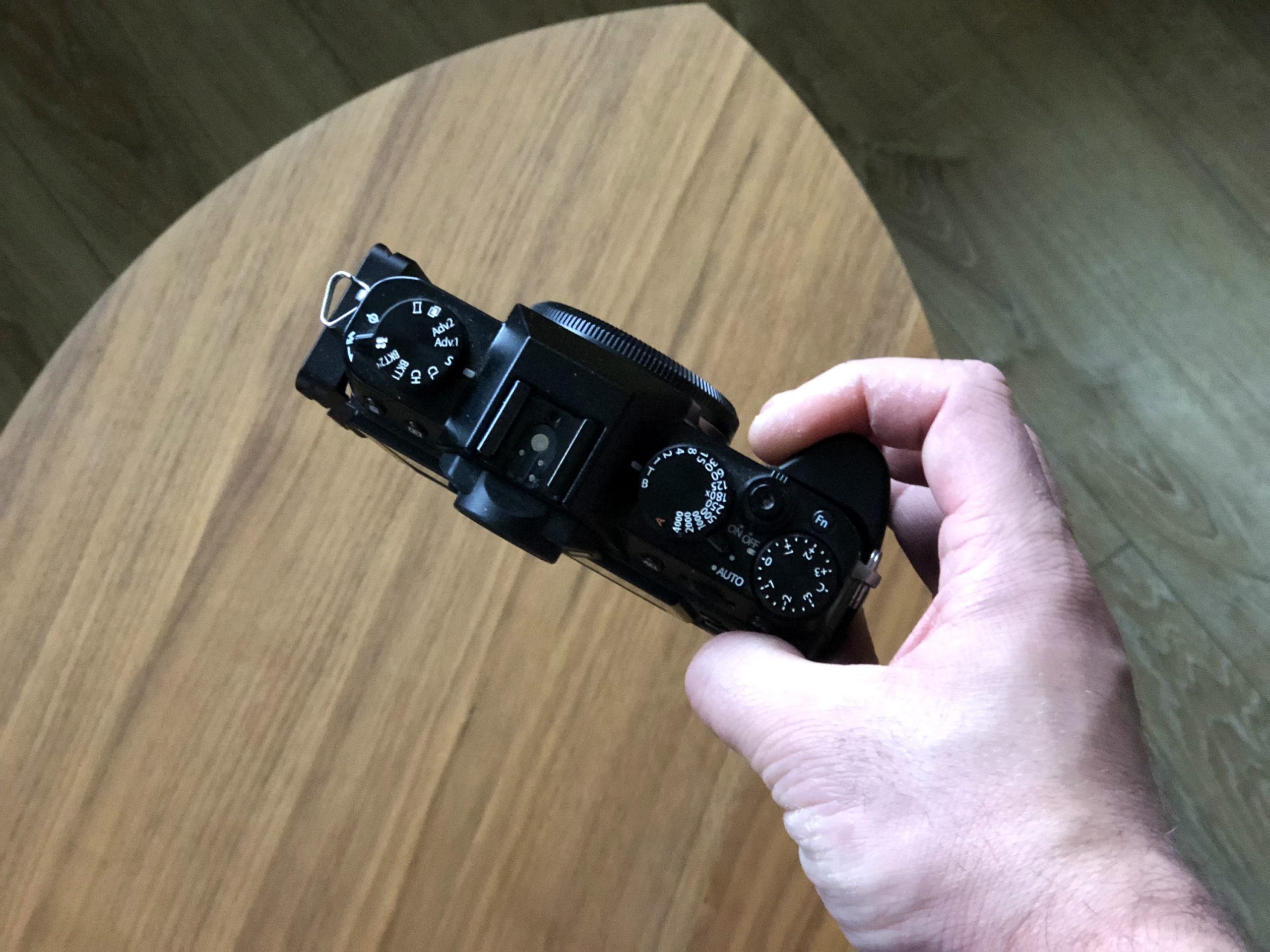
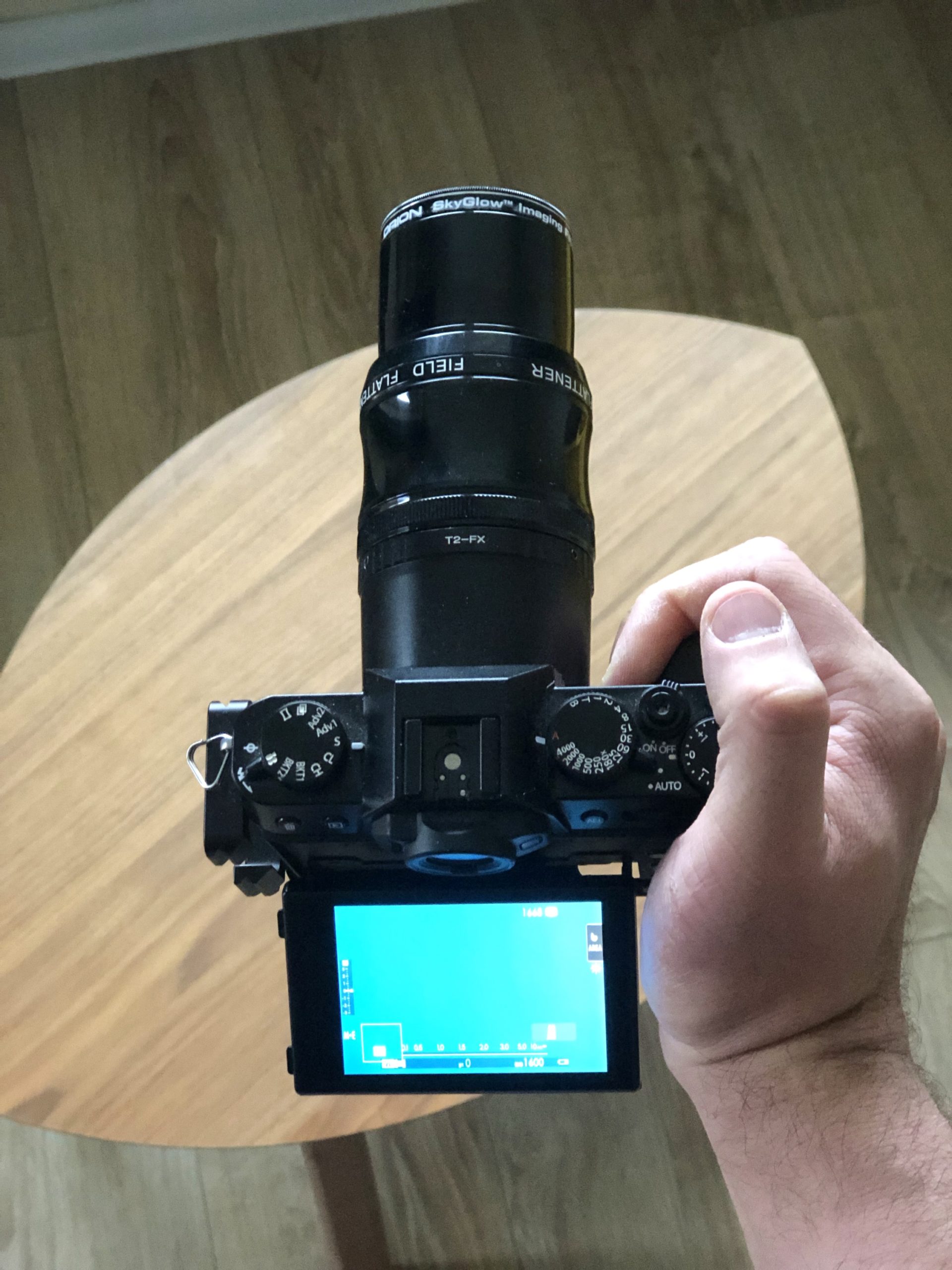
No products found.
Additional two or three batteries
X-T20 has nice power management. Batteries last for a long, usually more than 1,5 hours in my case (bulb mode, automatic exposures one after another). Yet, for the whole night of astrophotography shooting, you need more of them.
Field flattener or adapter to attach the camera to a telescope
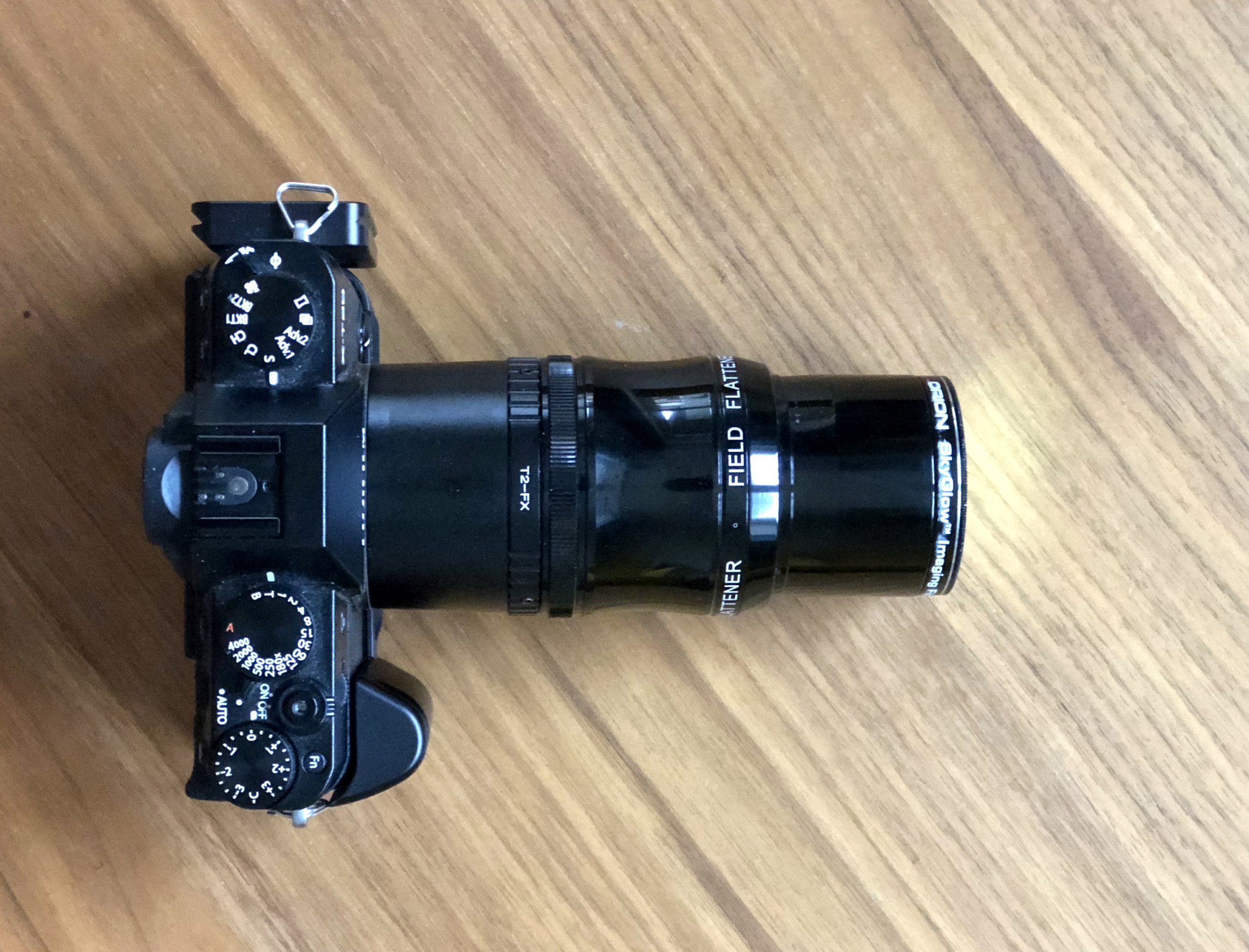
To connect Fuji X-T20 to a telescope, you need two things:
- An adapter from X-mount to your telescope's end
- A field flattener (optionally - some telescopes have them built-in inside)
External intervalometer (timer shutter release)
It's not a must-have, but if you like to automate your workflow, this device will be a big help for you. You set your camera to bulb mode, program your intervalometer (how many and how long exposures), and get back after a few hours to grab your pictures.
Filters
This may be optional depending on which type of astrophotography you want to do, but if you are interested in deep-sky objects (like most astrophotographers), then those two are your huge friends.
Light pollution filter
This is a no-brainer if you take photographs in a city, even a tiny one. In our modern world, light pollution is everywhere. Sometimes you can't see it with your own eyes, but it will show in your pictures. It's hard to avoid it entirely, but you can eliminate most of it with a proper filter and good post-processing skills. Sadly, when writing this review, there are no Fuji X-mount clip-in filters, so you have to choose a filter size for your lens or telescope specifically. I own and recommend those two light pollution filters:
NiSi Natural Night Filter (for lenses)
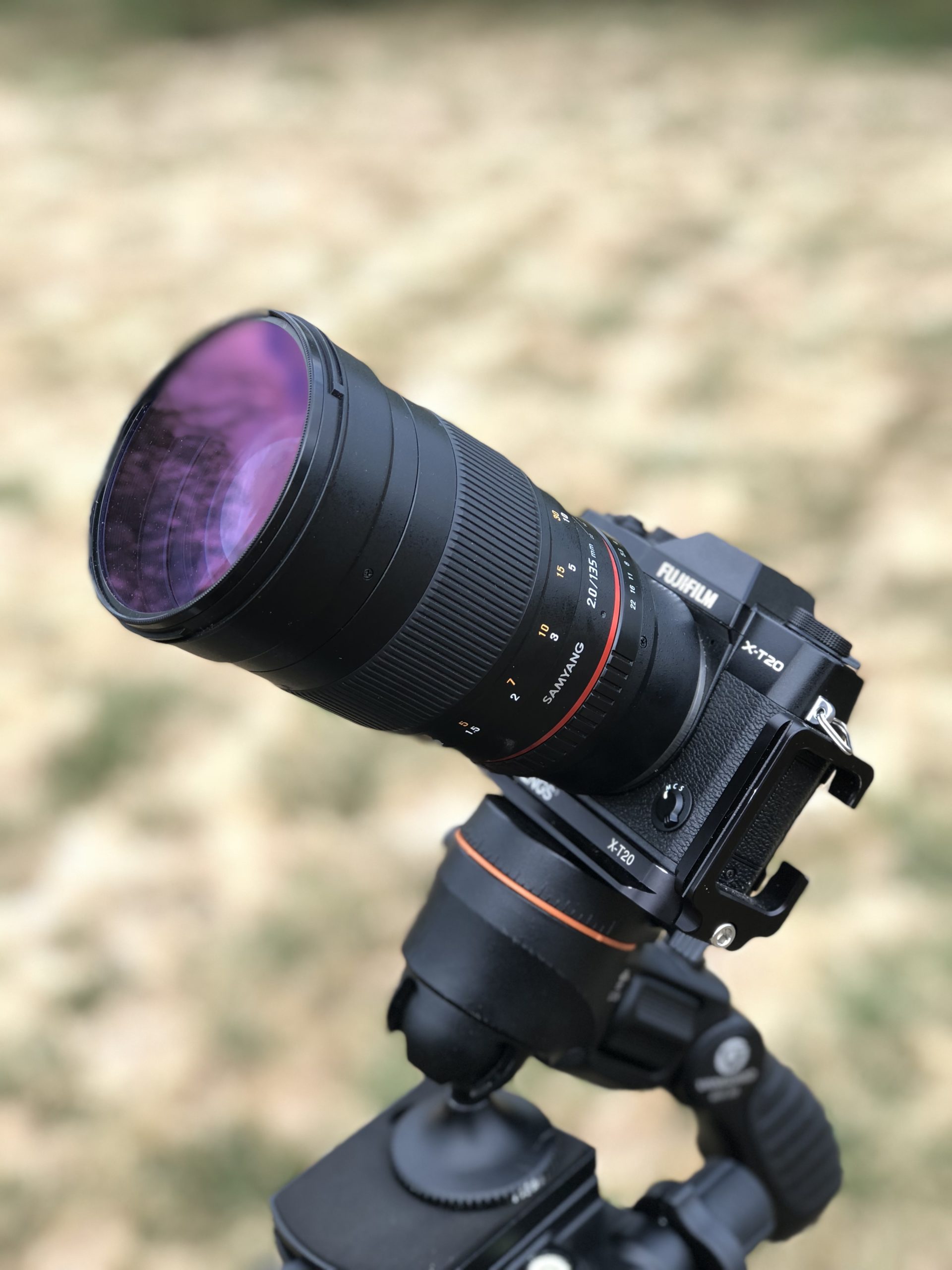
No products found.
Orion SkyGlow Imaging Filter (for telescopes)
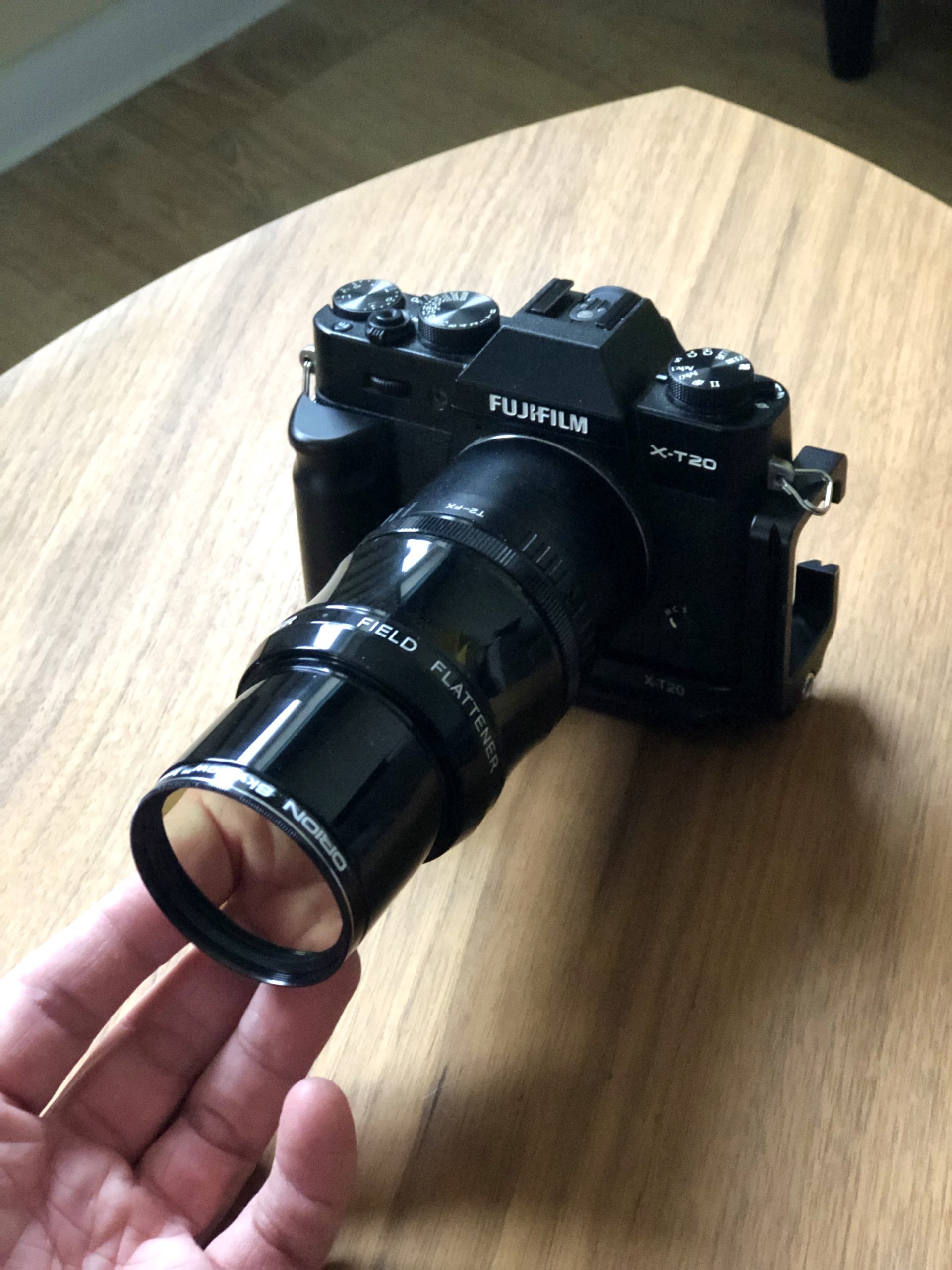
No products found.
Narrowband filters
Fuji X-T20 is not a perfect camera for narrowband imaging as it does not have a monochromatic sensor, but you can catch some usable H-alpha signal with X-T20. It's easier in winter, thanks to the free cooling for the sensor.
For H-alpha astrophotography with my X-T20, I use Baader H-alpha 7nm CCD Narrowband Filter.
No products found.
Fuji X-T20 astrophotography settings
Shoot in RAW
This may be obvious but remember to always set your camera to shooting in RAW (or, better yet, to RAF, the Fuji compressed RAW format). Shooting in JPG will give poor results, even from a fantastic camera like the Fuji X-T20.
ISO
This camera impresses me at 1600 ISO, and I think it's the sweet spot for astrophotography with the X-T20 - a perfect balance between time spent on acquiring data and the quality of it. Of course, lower ISO is always better, but I don't see any real decrease in image quality compared to ISO 800, and two times shorter exposure time is a real deal.
My verdict
Fuji X-T20 delivers fantastic astrophotography results, and besides a few minor quirks, it's a phenomenal camera to capture wide-field Milky Way shots and deep-sky images of nebulae, galaxies, and star clusters. I don't plan to swap my Fuji X-T20 for another DSLR or mirrorless camera shortly, but someday I will upgrade to a dedicated, cooled astronomy camera. You can attach almost any existing lens and telescope to your X-T20, and the camera's weight will let you use it even on the smallest equatorial mount on the market and fly around the world with a carry-on-bag-only easily. It's a perfect companion for astrophotography, both when you travel and when you are in your permanent observatory. Take some time to master this camera, and it will give you the astrophotography images you dream of. It gave me.
No products found.
My Amazon Picks for Fuji X-T20
No products found.


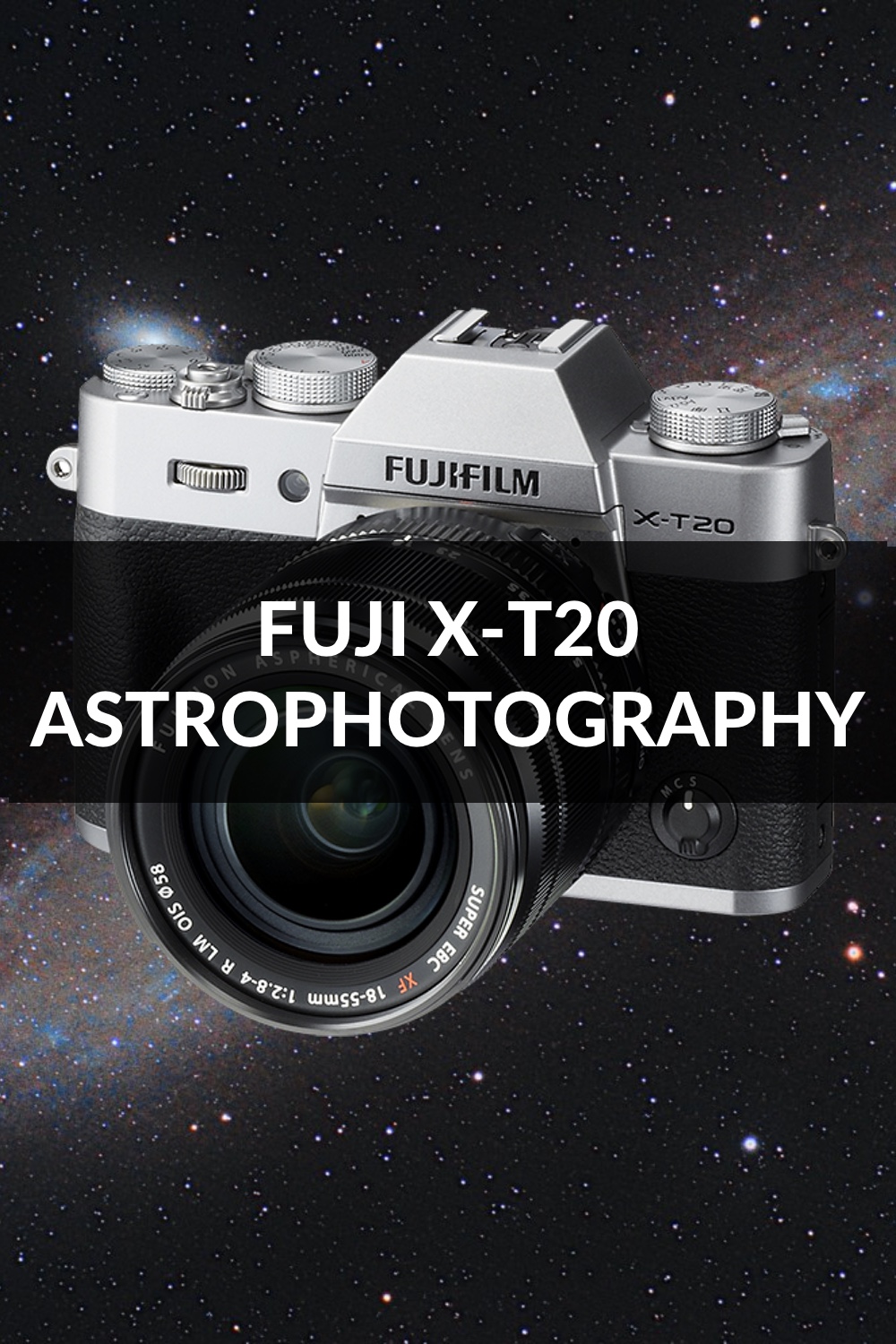
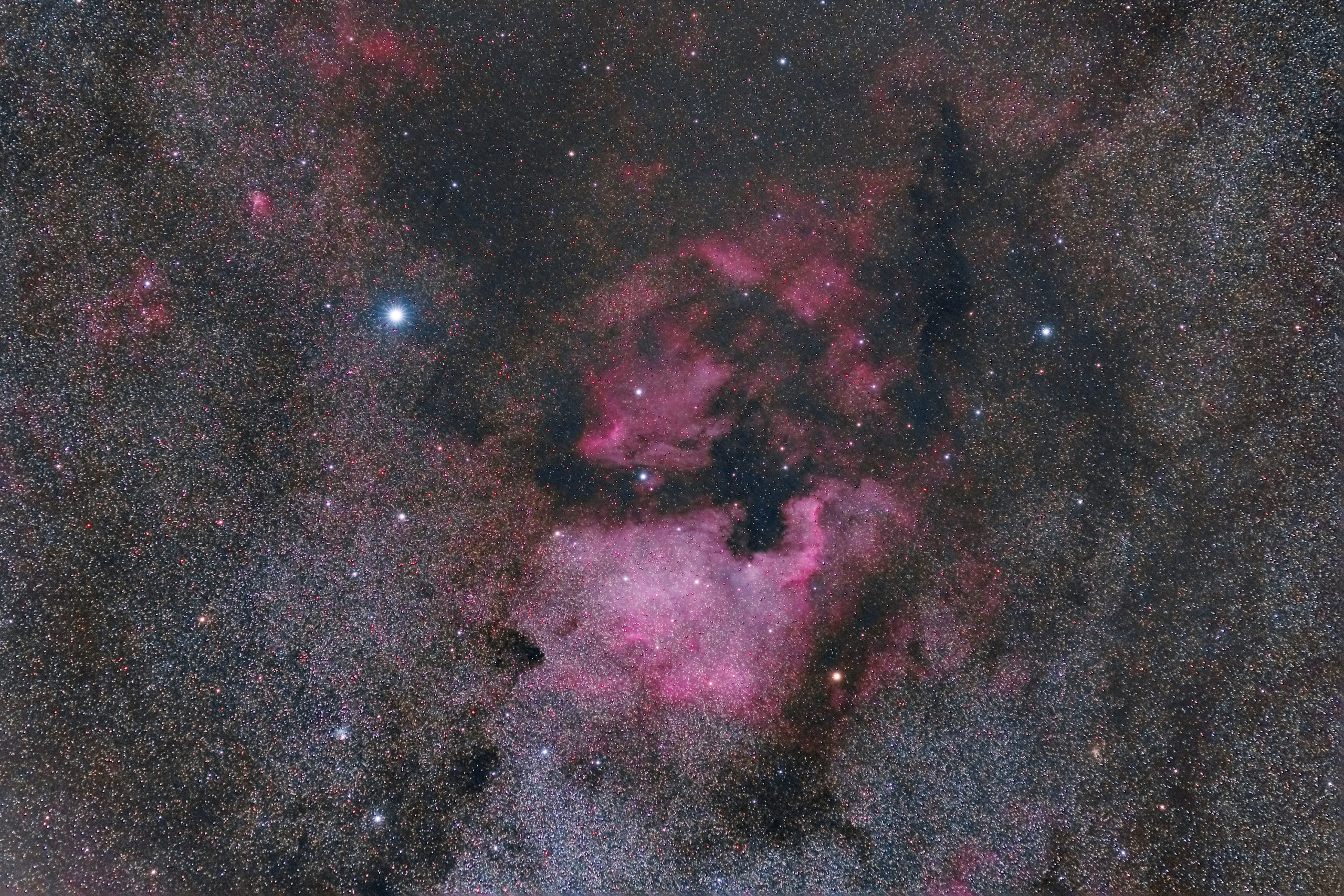
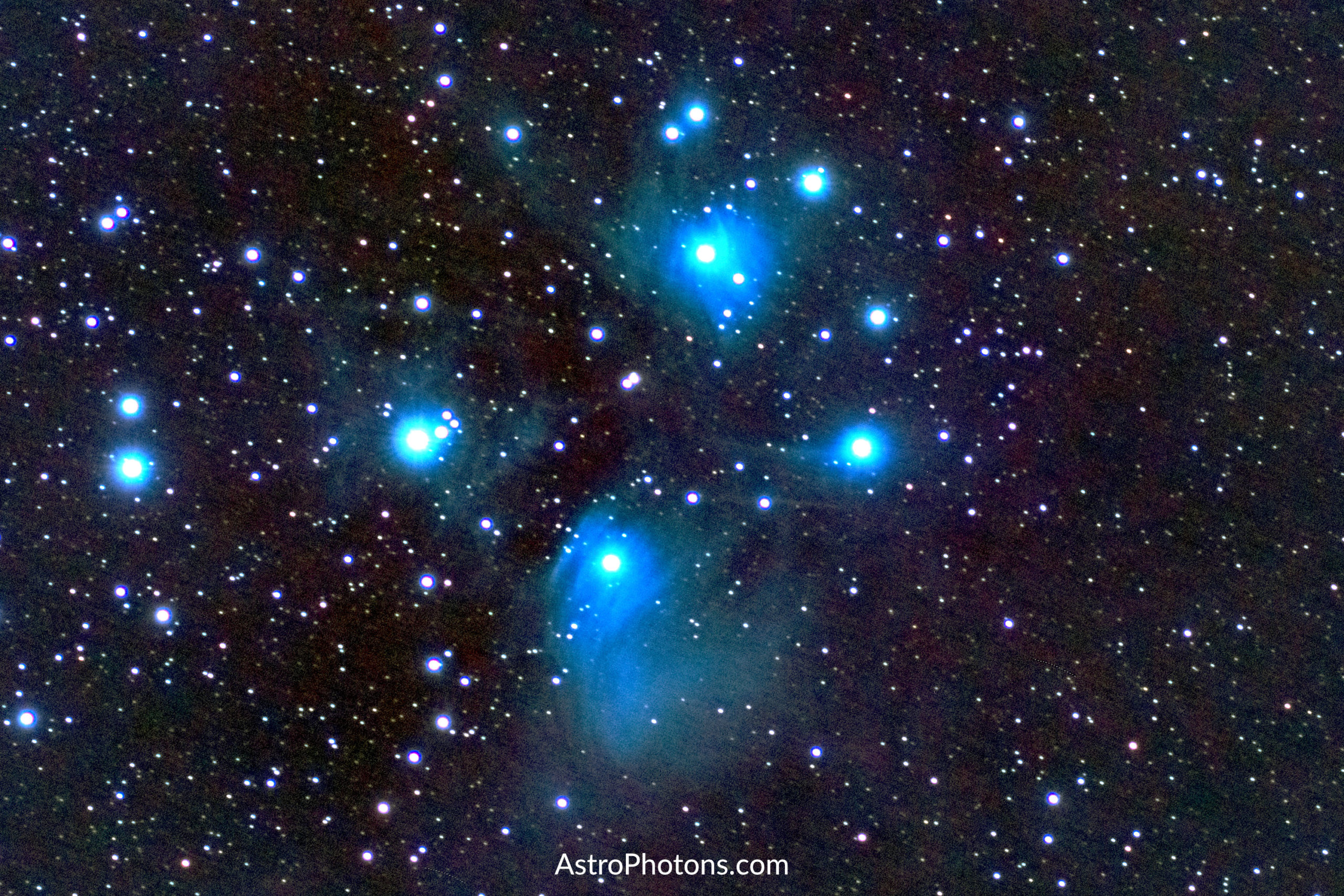
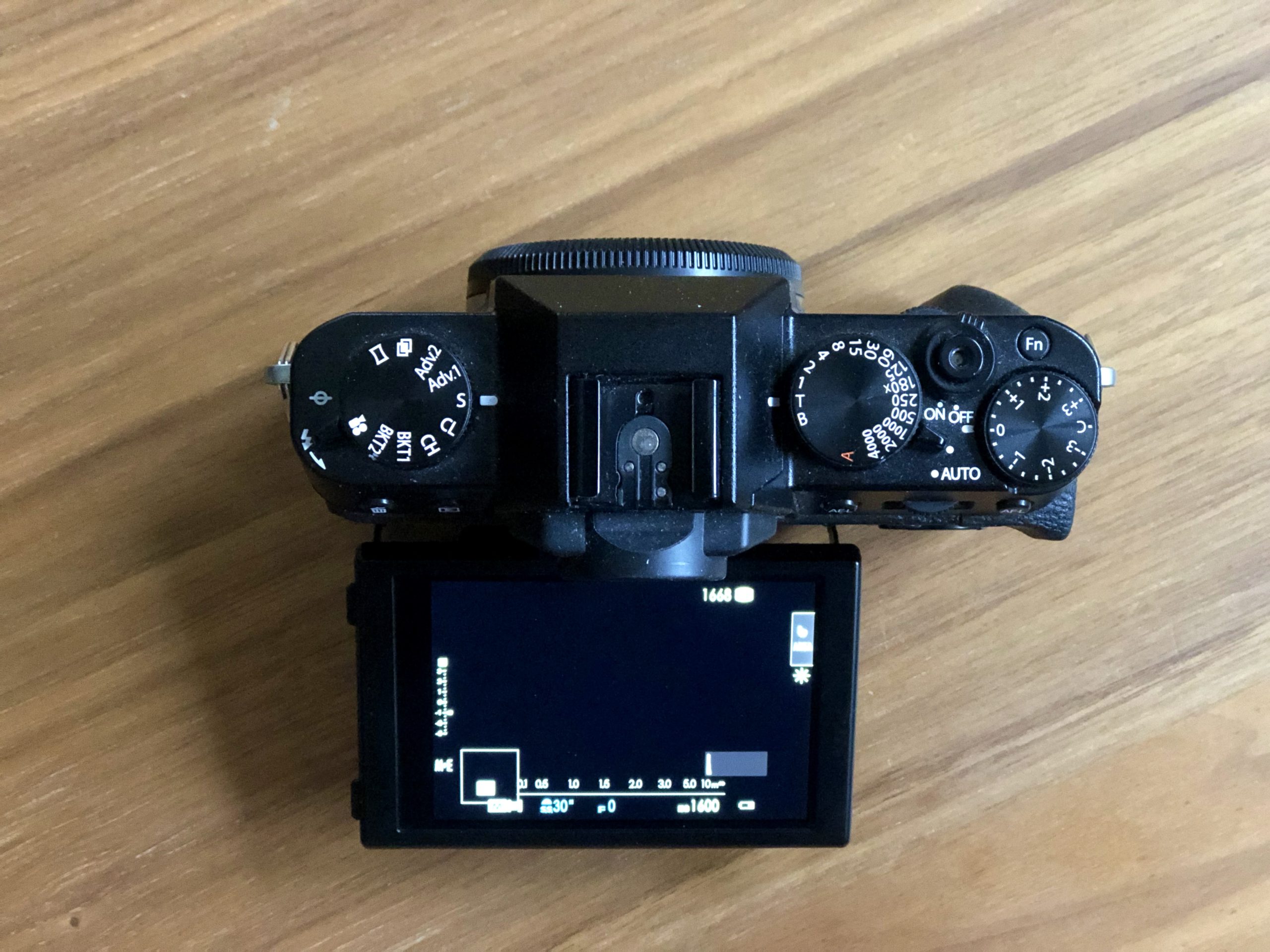
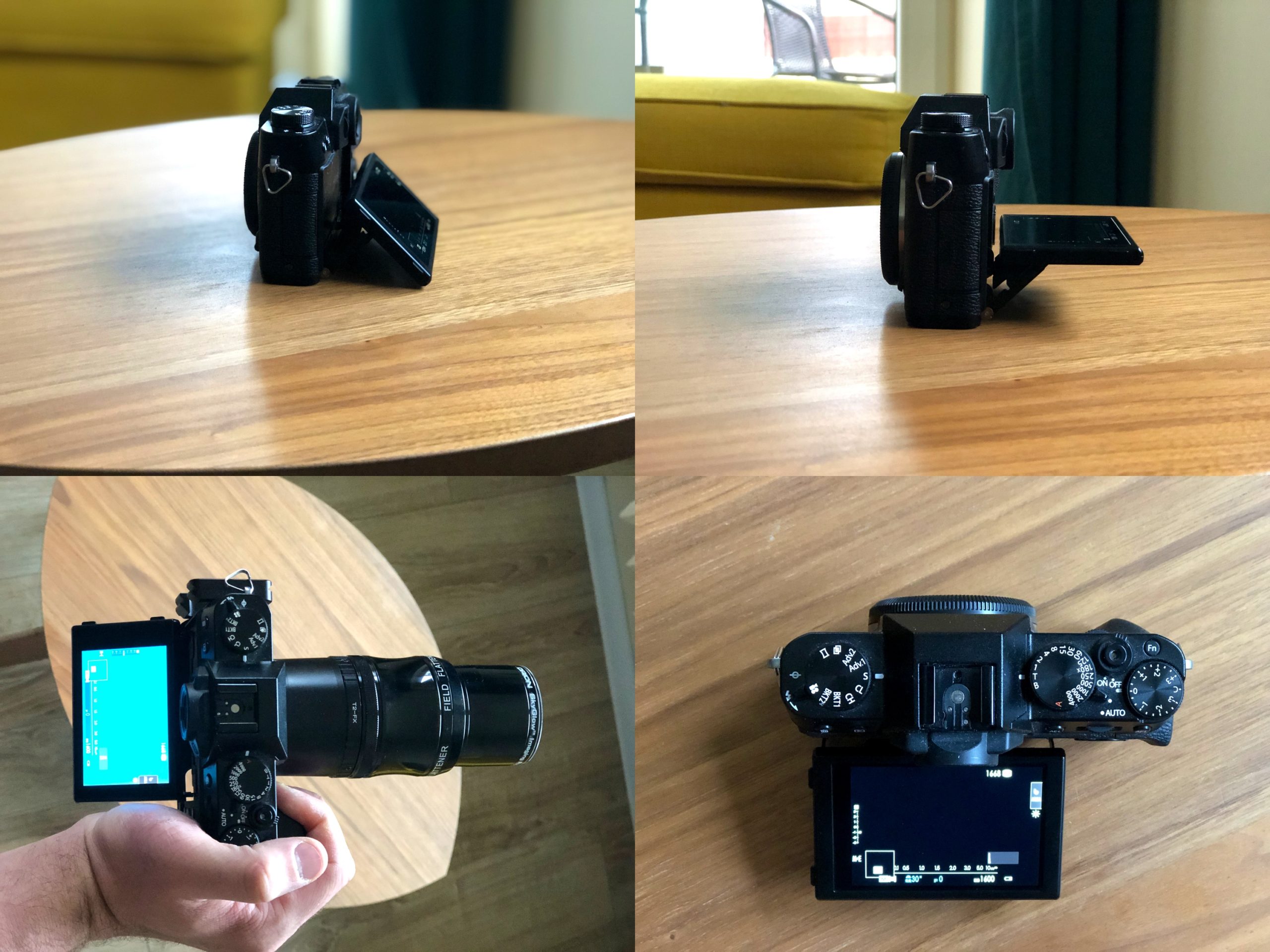
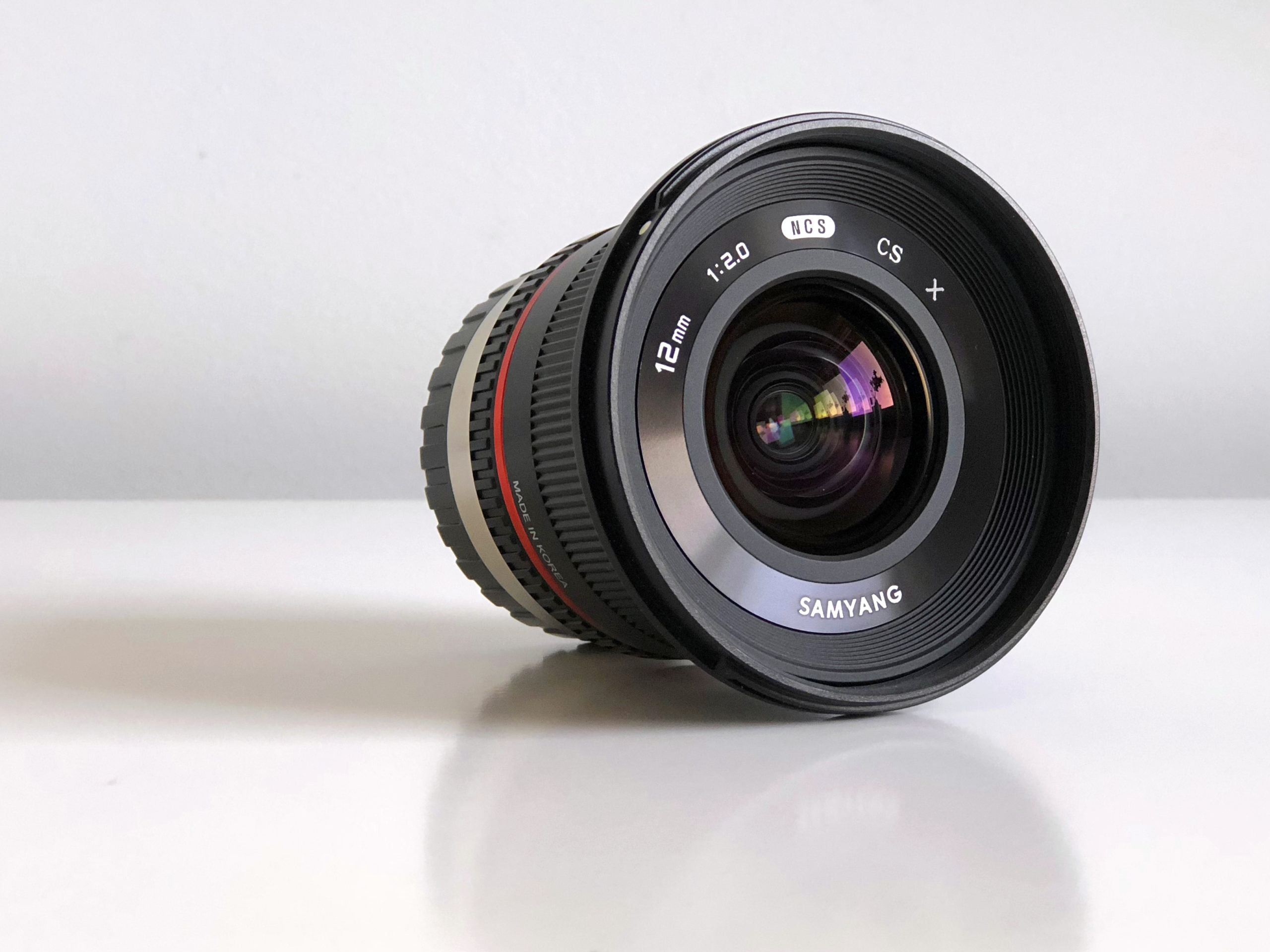
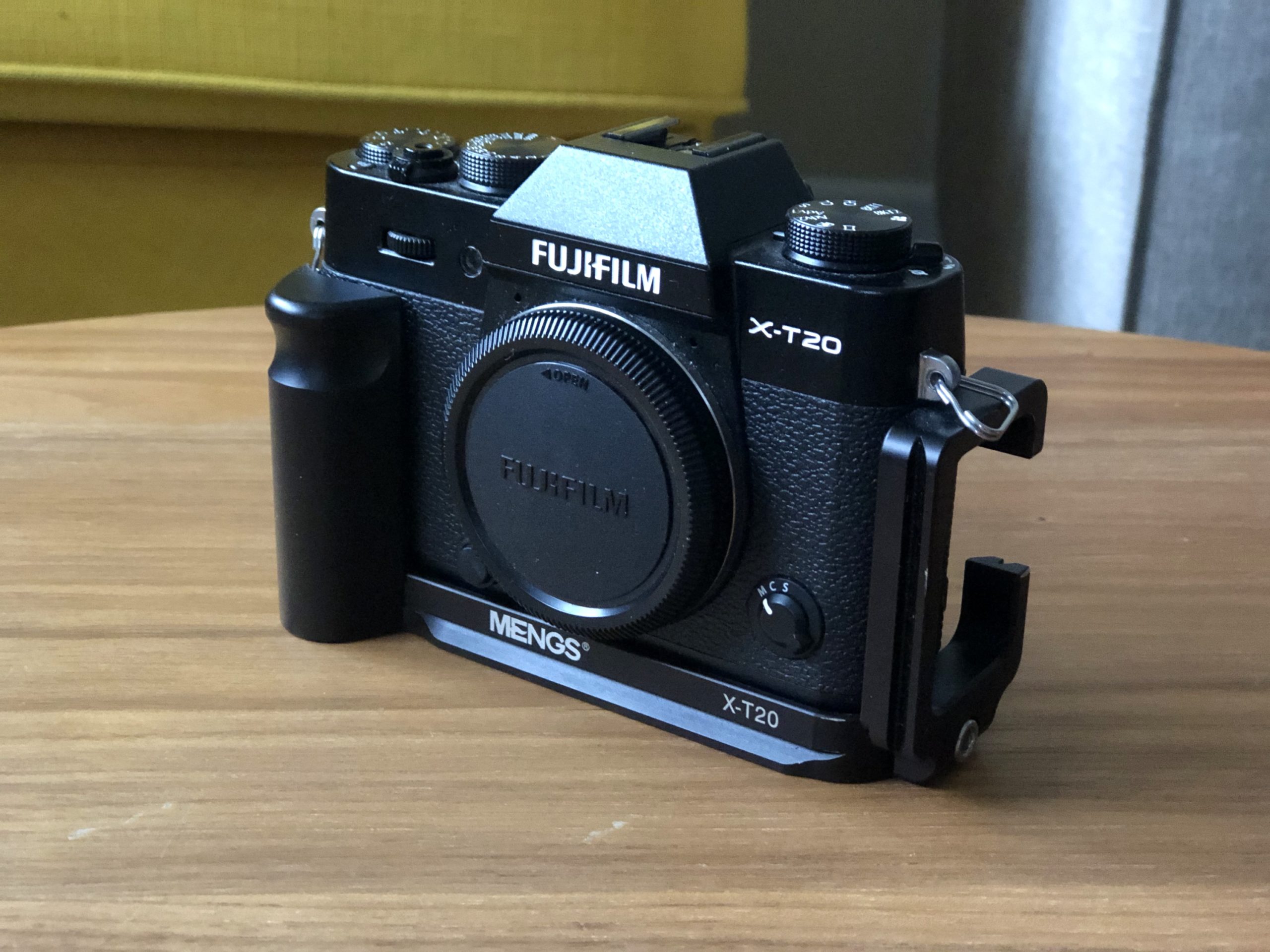
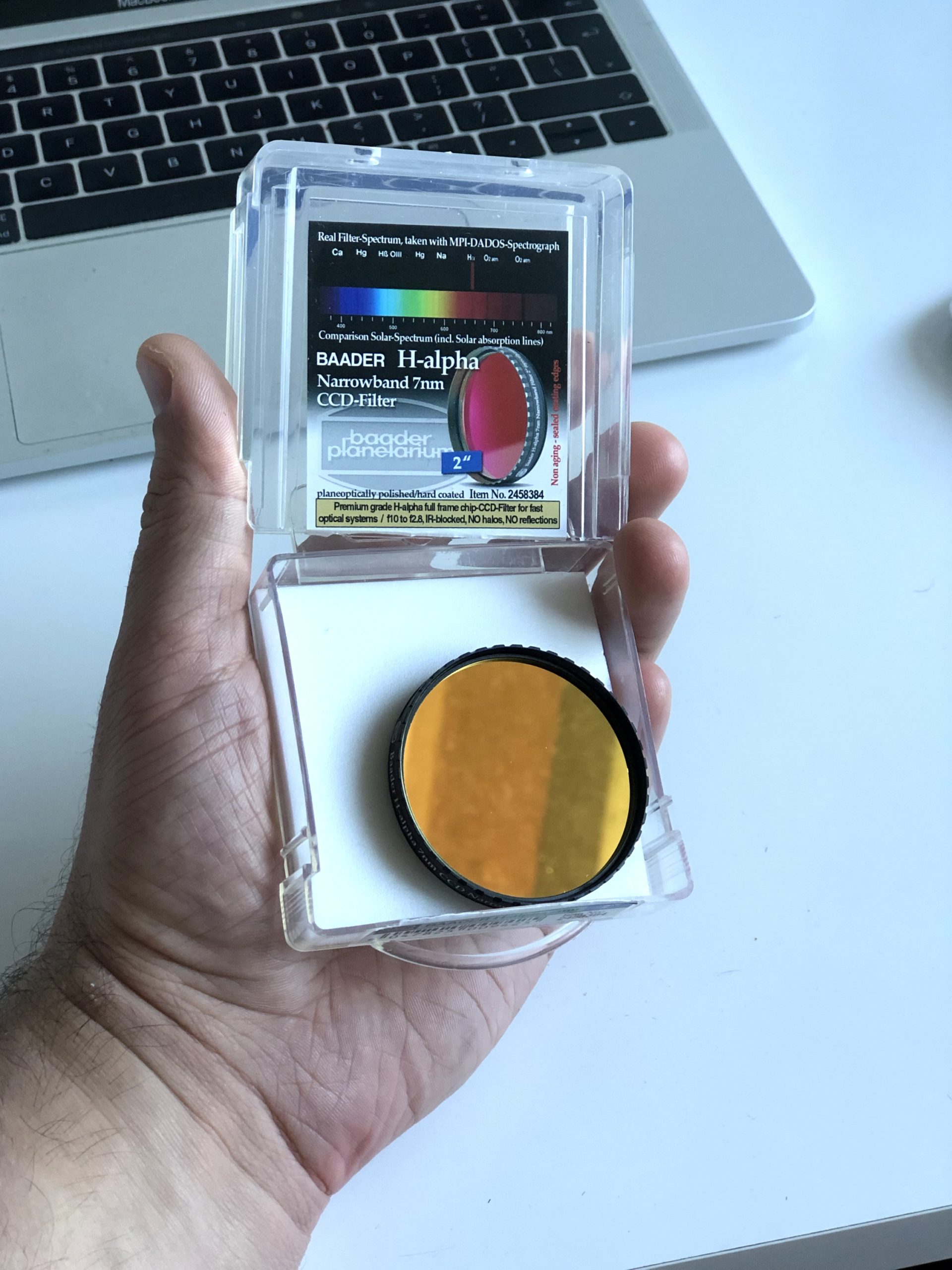
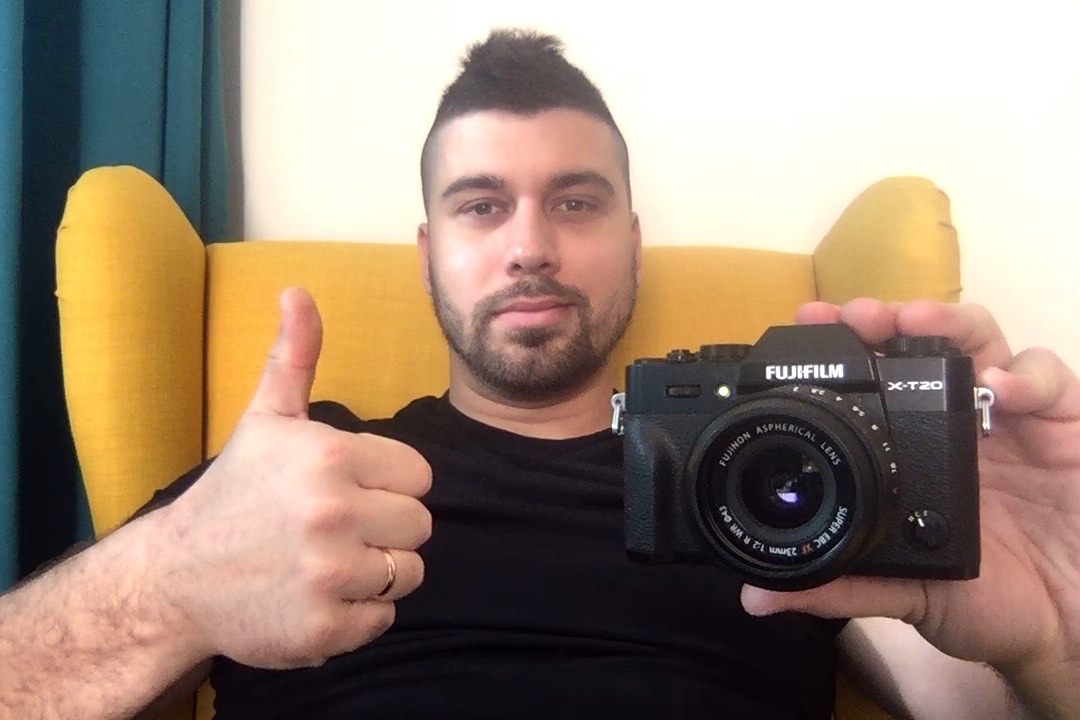
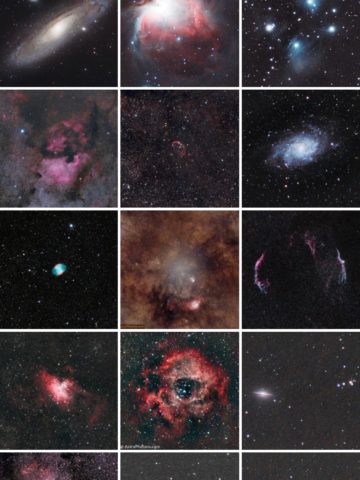
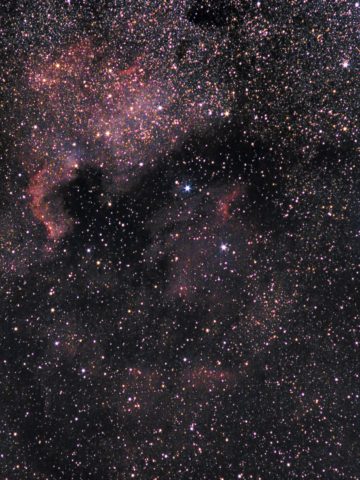
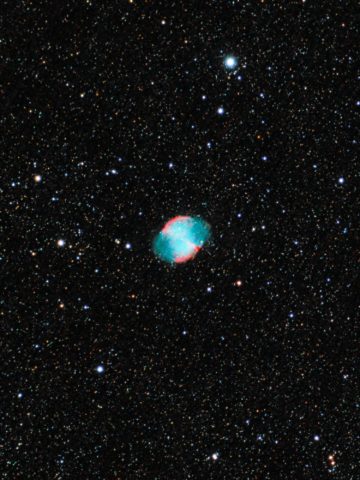
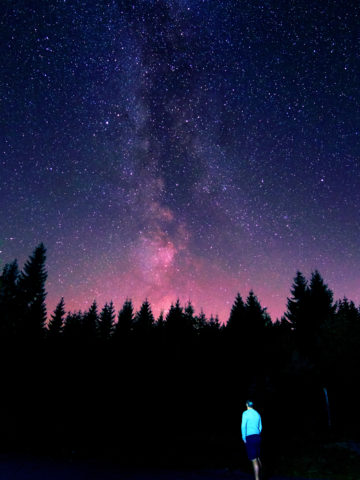
Cyril
Hello, I'm very happy to find this article. I'm a Fuji X-T20 owner and during last summer, I shooted the milky way using my SAMYANG/ROKINON 12 mm F/2. It was the first time and I obtained an expected result.
There is just 2 things I would like to add.
1 - Why do you need an external intervalometer, since ther is a built-in one in the X-T20 ?
2 - Retouching RAF files from X-Trans sensors is effectively a bit touchy. I own several retouching softwares : Affinity Photo, Luminar 3, Capture One Express Fuji and On1 Photo RAW 2019. I also have the Iridient X-Tranformer utility. I recently tested which of them give the best results and it appears that, when not using the Iridient X-Transformer, the best results are given by ON1 Photo Raw 2019. But the cheapest solution is to use Affinity Photo with Iridient X-Transformer. The quality is even slightly better than the native raw emgin from ON1.
Best Regards
Paweł Białecki
Hi Cyril!
I'm glad the X-T20 + Sam 12mm f/2 combo works well for you.
About number one:
Yes, there is an intervalometer in X-T20, but it's limited to 30 seconds. If you shoot untracked (without an equatorial mount), then that's fine, because your exposures are shorter than 30 seconds. But to do multiple longer exposures (let's say 20 x five-minute exposures), you have to use some kind of external "programming". It's shame for Fujifilm, because it's a software-only limitation, that they could easily "fix". Bulb mode alone is not a solution here sadly.
In terms of RAF software - for "normal" pictures (landscapes, people, etc.), I use Capture One and it works flawlessly. For astro, I found PixInsight to be the best choice. I don't have any full tutorial yet, but you can see a few PixInsight tricks here: PixInsight Background Extraction
Clear skies!
Rob
Hi, If it's any help you can get an adapter to replace the battery to allow the camera to be externally powered, Fuji make one as do Ex-Pro. Below is a link to the one I use:
https://www.amazon.co.uk/gp/product/B01MTJZT2Q/ref=as_li_ss_tl?ref_=nav_custrec_signin&&linkCode=ll1&tag=&linkId=667e8725cba680fe57798e266ad717a2&language=en_GB
Rob
I use the same adapter with my XT-2 when doing Astro photography, works really well.
Ej
Which adapter do you recommend for the telescope and where would you purchase? Using XT2 here...thx!
Rob
I’m using the William Optics adapter with my XT2, well made and works well, just a shame that it’s only available in grey.
Paweł Białecki
Hi Ej,
to connect my X-T20 (it will work with X-T2 too) to a telescope, I use two items:
1. T2-FX adapter - this goes directly into the camera (as a "lens").
2. William Optics field flattener - this goes on the adapter.
That combo goes directly into the telescope. You can see this in my SkyWatcher Evostar 72ED review
I bought both parts in a Germany-based store Teleskop Express/Teleskop Service.
Rob
Do you tether the camera? If so what software do you use?
Paweł Białecki
Hi Rob, I don't, but I found this:
https://www.tethertools.com/camera/fuji-xt-20/
I hope it will be useful for you!
Sophocles Tsivides
Hi, excellent article; thank you.
I just purchased a used X-T20 and a new Samyang 12mm f2 lens to experiment with MilkyWay photography and time-lapse.
Regarding powering the camera from an external source, it was also my concern. I connected both outputs (2.1A & 1A) of a 30k mAh power bank to the USB port of the camera, while the battery was missing only one line.
I left the camera in my balcony just to take images at a 5s interval. After 110min there were 1279 images taken, disconnected the power cable and battery was in its original state; 1 line missing. I assume the test was successful; correct me I'm missing something.
All the best
Paweł Białecki
Hello Sophocles! Congrats on buying probably the best combo for the non-tracked Milky Way shooting!
Thanks for the info about charging. I will check this myself too, as I recently bought a Celestron battery for my equatorial mount. I'll update you after my next astrophotography session.
Steve
Hi Pawel, Its great to see XT20 owners doing AP and really enjoyed your website. I want to start AP but I can't figure out what mount to buy ? Which mount do you use ?
regards
Steve
Jorge Willebald
Hello, very good article, and very simple to my noob point of view. I want to ask you somethig, i have an x-t20 and a reflector telescope, i attached them together with a T2-FX adapter (the same as your photos), but im failing to do proper focus, i transit the hole lenght of the focus distance and i never do focus anything. I don't know if the "field flattener" is what i need, i have looked for it on amazon and didn't find any, if you can help me on this one i'll be forever gratefull. Thank you again.